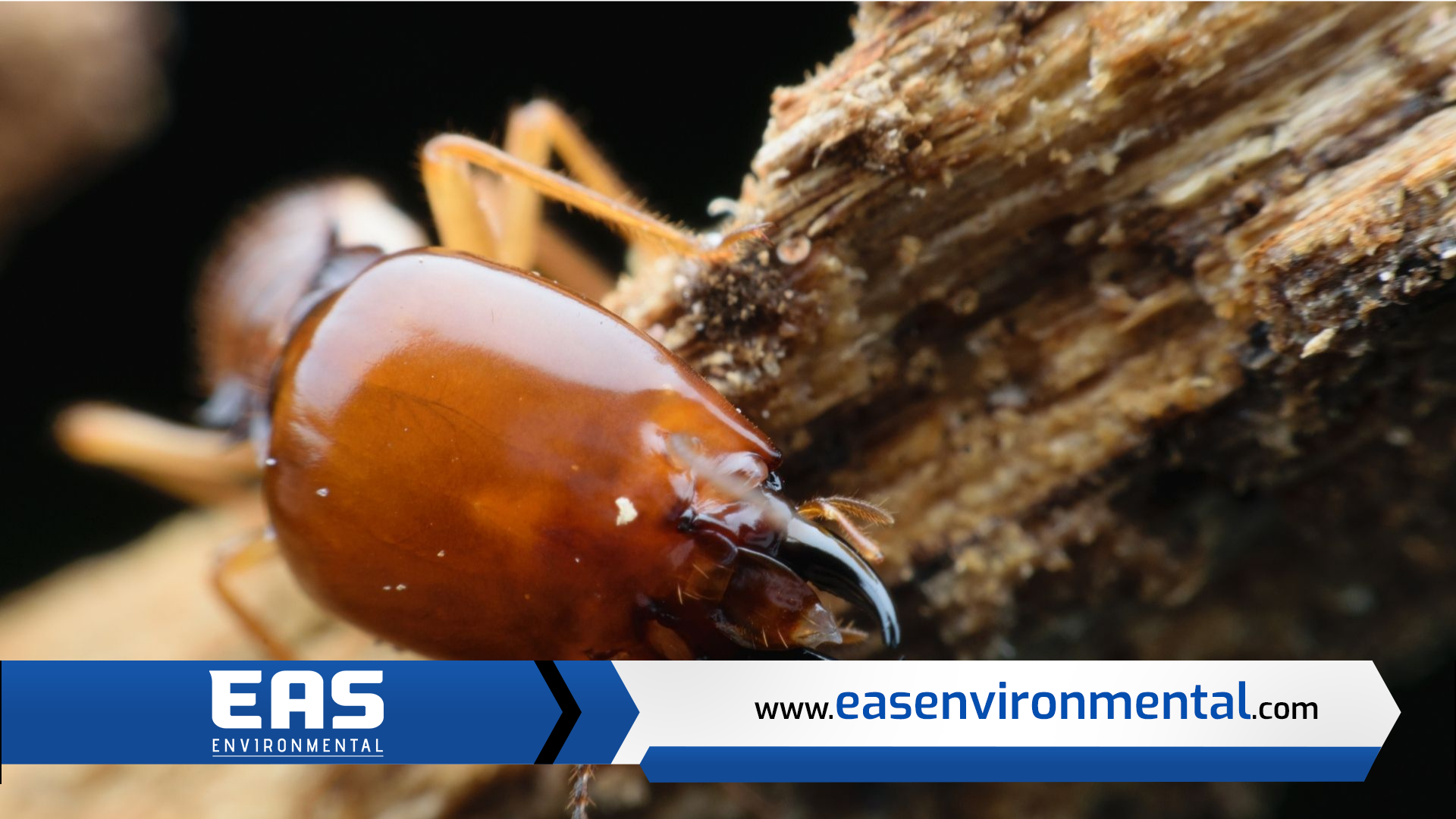Termite Damage Repair in Charleston, SC
Is termite damage covered by homeowners insurance?
Termite damage is not covered by house insurance because termites are classified as insects, and home insurance plans do not cover damage caused by insects. Insurers consider insects to be an avoidable problem, which, of course, shifts the burden back to the homeowner.
What can be mistaken for termites?
Flying ants are the most usually mistaken insects as termites. Carpenter ants are the most frequent type of ants that fly over your house, but they are far from the only ones. Moisture ants, black garden ants, and pavement ants are other potential imposters.
How much do termites damage devalue a home?
The finding of termites on your home can diminish its value by nearly 20% if the infestation is identified in time to be treated. Treating your property at the first indication of a termite infestation will help you keep your home's worth in the long run.
Is termite damage a deal breaker?
Unless there is severe and unresolved structural damage to the home caused by termites, termite damage should not be a deal breaker in most circumstances. In both circumstances, you have the option of negotiating with the seller and their realtor utilizing the new facts.
Can termite damage be fixed?
So, certainly, termite damage may be repaired, either by replacing the damaged wood with new wood or by reinforcing the damaged wood with additional support. The manner of restoration is determined by the extent of termite damage to the wood. More serious damage will very certainly require tear out and replacement.
How fast can termites destroy a house?
With around 2 million termites swarming in optimal conditions, they may inflict major damage during the first few months. In a year or two, a house can be completely ruined.
How long does it take for termites to infest a house?
Termite damage can take anywhere from 3 to 8 years to appear, depending on the size of the colony.
Why do termites suddenly appear?
Termites swarm when their initial colony has achieved a critical mass and is ready to expand. This happens once a year for most colonies. Hundreds, if not thousands, of swarmers known as alates are generated for the sole aim of reproduction and expansion.
Can you live in a house with termites?
Buildings or houses built of wood may be unsuitable to dwell in if termites have already caused significant damage to the foundations, beams, and other structural supports. This is a severe safety hazard since a strong wood structure becomes weak and fragile.
When should you fix termite damage?
Repairs should not be undertaken until a certified pest professional has determined that termites are no longer present and that the danger of new infestation has been eradicated. The termite inspector will be able to provide services for active infestations as well as prevention measures.
How do you know if termites are in your walls?
Small pinholes where termites have eaten through the paper coating on drywall and/or wallpaper, paint 'lines' on drywall, a hollow sound when you tap on the wall, bubbling or peeling paint, baseboards that crumble under slight pressure, and jammed doors or windows are all common signs of termite damage to a wall.
Does termite eat drywall?
Drywall, often known as sheetrock, is a type of wall and ceiling covering used in houses. It is constructed of plaster panels that are surrounded on both sides by thick sheets of paperboard. Termites may easily feed on the paper in drywall and cause damage since it is partially formed of cellulose.
Can you paint over termite damage?
Painting over termite damage is not just inefficient; it may also be illegal in some situations. If you intend to sell your property in the future, an inspector will be able to determine that you just painted over the damage.
Do termites burrow through drywall?
While termites prefer to feed on the cellulose in wood, they are quite ready to chew through other cellulose-containing items to satisfy their need. Termites, for example, can and can gnaw through a variety of construction materials, including dirt, sheetrock, and, yes, drywall.
Should termite damaged wood be replaced?
When termite damage extends beyond the surface of the wood, it must be removed. If the colony has infiltrated the structure of your home, it is safer to replace the wood, especially in load-bearing sections. However, for minor damage, wood hardeners can be used to clean and add support.
How do I know if I have old or new termite damage?
The most effective approach to tell whether a drywood termite infestation is old or new is to remove or disguise the termite droppings/pellets. The hue of the droppings does not indicate whether the infestation is old or fresh.
What if you find termite damage but no termites?
The sight of old termite damage in the absence of living termites just indicates that your property was once infested by these wood-destroying parasites. That doesn't mean they're not still around and causing havoc on load-bearing walls, support beams, and other timber.
How destructive are termites?
Because of their ability to gnaw through wood, flooring, and even wallpaper unnoticed, termites are known as "silent destroyers." Subterranean termites are by far the most damaging termite species since they feed 24 hours a day, seven days a week. Termite colonies can have up to 2 million workers.
How do you test wood for termite damage?
Termite damage can cause wavy wood or hollowed-out patches in wood. Wet rot may make wood seem darker than surrounding parts and feel mushy and spongy. When touched, dry rot can cause the wood to fracture and crumble. Fungi growth on deteriorating wood may be visible.
Got a Question? We’re Here to Help.
You can arrange an appointment or make an enquiry by phone or email, orget in touch to us via our contact form.
Frequently AskED Questions
Take a moment to read answers to our most frequently asked questions about our services.
Cities We Proudly Service
Click on the dropdown below to see all the cities we provide termite damage contracting services.
Contact EAS Environmental Today!
EAS Environmental will do everything we can to ensure your experience with us is excellent.
Request A FREE Estimate
Request a Free Estimate Form
24-Hour Emergency Service
Contact Information
Phone: 843-460-8391
Address: 125 Bud Lane Ladson Charleston, SC 29486
Email: sturner@easenvironmental.com
Business Hours:
24/7 Open
Appointments Available
Servicing North Charleston and all of South Carolina
EAS Environmental provides many services related to environmental hazardous abatement and cleanup as well as solving moisture control issues.
Related Services
Please see our most requested services listed below. EAS Environmental is here for you when you need asbestos or lead abatement, or moisture control service to prevent mold growth.
Asbestos Removal
With asbestos removal services, you'll never again have to worry about this hazardous substance that could wreak havoc on your health and wellbeing. Whether its in a private residence or commercial setting, we're a licensed and certified abatement firm that will remove asbestos from anywhere it may be found!
Demolition Services
It's hard to find a good demolition company, especially if you're in an emergency situation. We are the best demolition company around, and we can handle any job big or small. Our team of experts have years of experience under their belt so they'll be able to get your project done right the first time.
Disaster Restoration: Fire and Water Damage Restoration
When disaster strikes, fast action is critical. If your home or business has suffered fire or smoke damage, don’t wait—EAS Environmental is here to help. Our expert team provides responsive and prompt fire and damage restoration services to help you recover quickly and safely. Call us today to learn more about our fire damage repair services near you!
Schedule Your FREE Asbestos & Lead Evaluation!
Did you know that asbestos containing materials are still being sold in today? Call us today to find out more!


